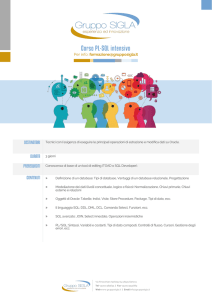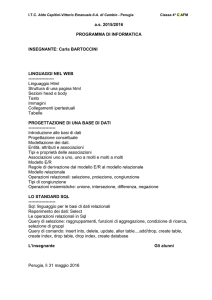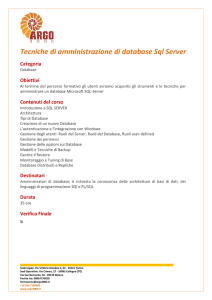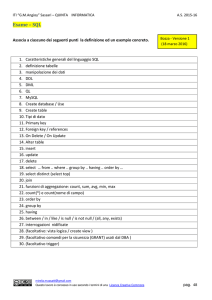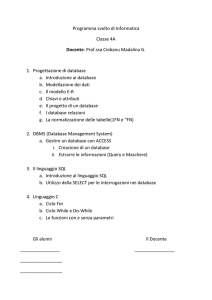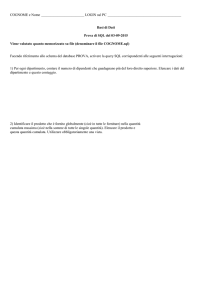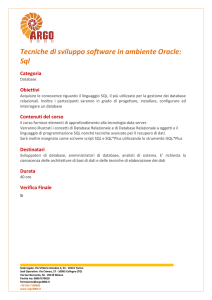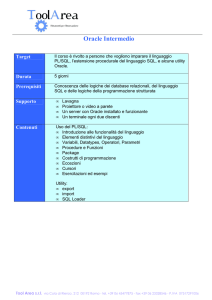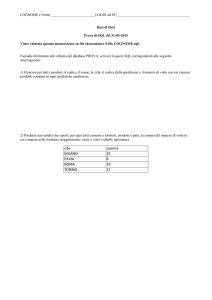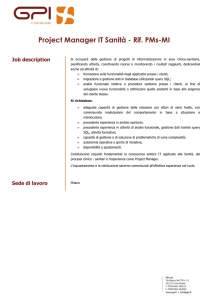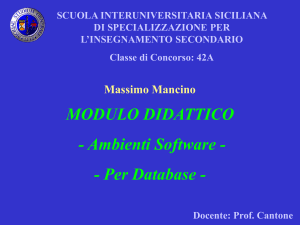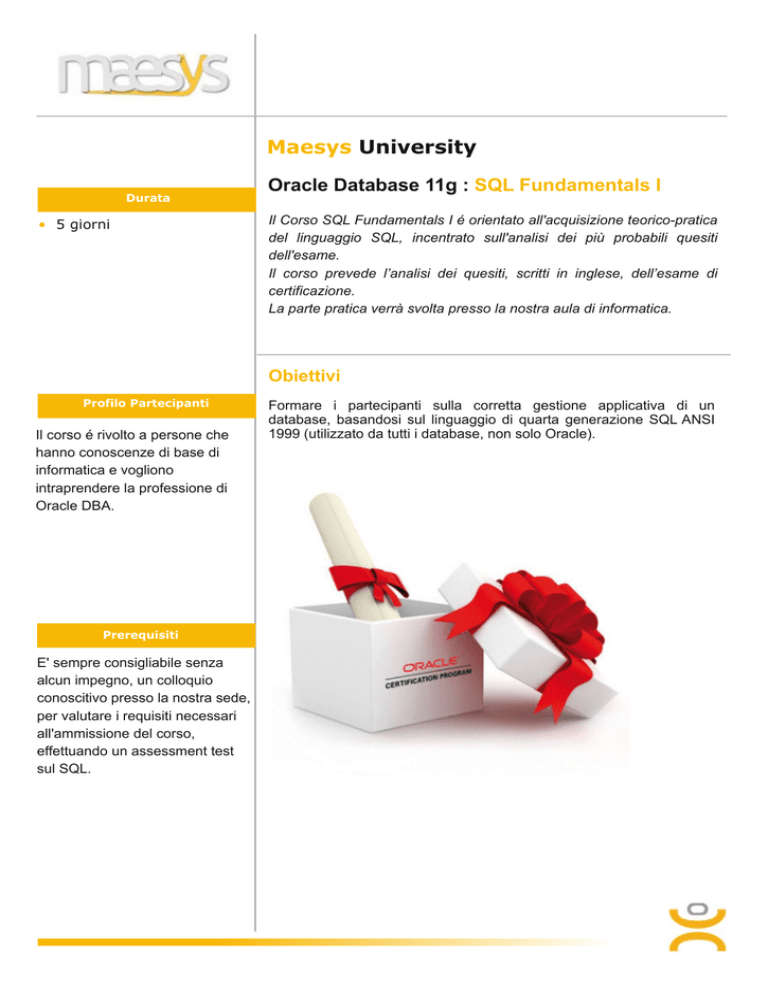
Maesys University
Durata
• 5 giorni
Oracle Database 11g : SQL Fundamentals I
Il Corso SQL Fundamentals I é orientato all'acquisizione teorico­pratica
del linguaggio SQL, incentrato sull'analisi dei più probabili quesiti
dell'esame.
Il corso prevede l’analisi dei quesiti, scritti in inglese, dell’esame di
certificazione.
La parte pratica verrà svolta presso la nostra aula di informatica.
Obiettivi
Profilo Partecipanti
Il corso é rivolto a persone che
hanno conoscenze di base di
informatica e vogliono
intraprendere la professione di
Oracle DBA.
Prerequisiti
E' sempre consigliabile senza
alcun impegno, un colloquio
conoscitivo presso la nostra sede,
per valutare i requisiti necessari
all'ammissione del corso,
effettuando un assessment test
sul SQL.
Formare i partecipanti sulla corretta gestione applicativa di un
database, basandosi sul linguaggio di quarta generazione SQL ANSI
1999 (utilizzato da tutti i database, non solo Oracle).
Moduli del corso:
I nostri contatti
• Retrieving Data Using the SQL SELECT Statement
[ ] List the capabilities of SQL SELECT statements
[ ] Execute a basic SELECT statement
• Cinisello Balsamo(MI)
Viale Brianza,20
20092, Italia
• Restricting and Sorting Data
[ ] Limit the rows that are retrieved by a query
[ ] Sort the rows that are retrieved by a query
[ ] Use ampersand substitution to restrict and sort output at runtime
Tel. +39 02 36527222
• Using Single­Row Functions to Customize Output
[ ] Describe various types of functions available in SQL
[ ] Use character, number, and date functions in SELECT statements
• Roma (RM)
Via Cavour, 278
00184, Italia
Tel. +39 064827570
[email protected]
• Using Conversion Functions and Conditional Expressions
[ ] Describe various types of conversion functions that are available in
SQL
[ ] Use the TO_CHAR, TO_NUMBER, and TO_DATE conversion
functions
[ ] Apply conditional expressions in a SELECT statement
• Reporting Aggregated Data Using the Group Functions
[ ] Identify the available group functions
[ ] Describe the use of group functions
[ ] Group data by using the GROUP BY clause
[ ] Include or exclude grouped rows by using the HAVING clause
• Displaying Data from Multiple Tables
[ ] Write SELECT statements to access data from more than one table
using equijoins and nonequijoins
[ ] Join a table to itself by using a self­join
[ ] View data that generally does not meet a join condition by using outer
joins
[ ] Generate a Cartesian product of all rows from two or more tables
• Using Subqueries to Solve Queries
[ ] Define subqueries
[ ] Describe the types of problems that the subqueries can solve
[ ] List the types of subqueries
[ ] Write single­row and multiple­row subqueries
• Using the Set Operators
[ ] Describe set operators
[ ] Use a set operator to combine multiple queries into a single query
[ ] Control the order of rows returned
• Manipulating Data
[ ] Describe each data manipulation language (DML) statement
[ ] Insert rows into a table
[ ] Update rows in a table
[ ] Delete rows from a table
[ ] Control transactions
• Using DDL Statements to Create and Manage Tables
[ ] Categorize the main database objects
[ ] Review the table structure
[ ] List the data types that are available for columns
[ ] Create a simple table
[ ] Explain how constraints are created at the time of table creation
[ ] Describe how schema objects work
• Creating Other Schema Objects
[ ] Create simple and complex views
[ ] Retrieve data from views
[ ] Create, maintain, and use sequences
[ ] Create and maintain indexes
[ ] Create private and public synonyms

